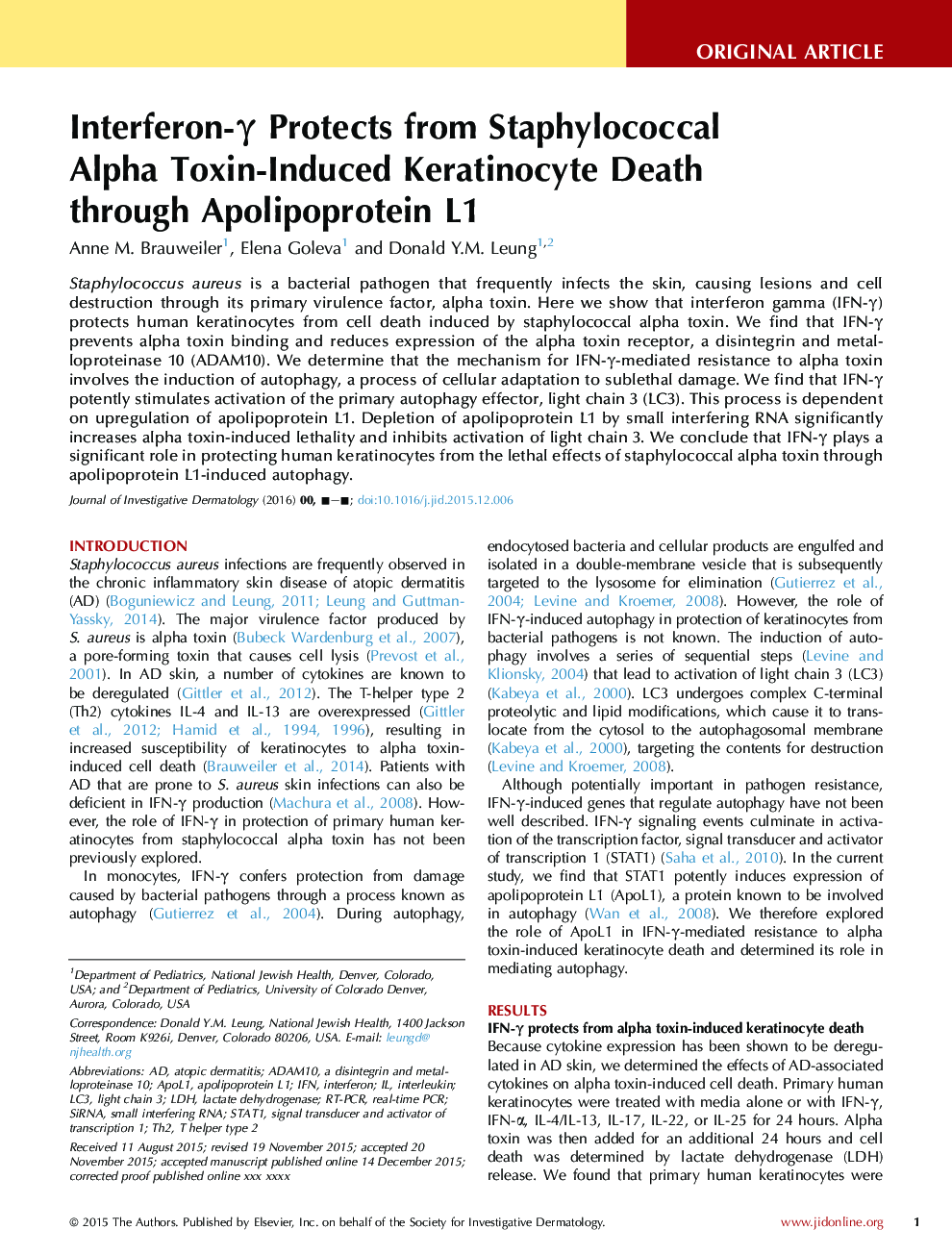| Article ID | Journal | Published Year | Pages | File Type |
|---|---|---|---|---|
| 6075052 | Journal of Investigative Dermatology | 2016 | 7 Pages |
Abstract
Staphylococcus aureus is a bacterial pathogen that frequently infects the skin, causing lesions and cell destruction through its primary virulence factor, alpha toxin. Here we show that interferon gamma (IFN-γ) protects human keratinocytes from cell death induced by staphylococcal alpha toxin. We find that IFN-γ prevents alpha toxin binding and reduces expression of the alpha toxin receptor, a disintegrin and metalloproteinase 10 (ADAM10). We determine that the mechanism for IFN-γ-mediated resistance to alpha toxin involves the induction of autophagy, a process of cellular adaptation to sublethal damage. We find that IFN-γ potently stimulates activation of the primary autophagy effector, light chain 3 (LC3). This process is dependent on upregulation of apolipoprotein L1. Depletion of apolipoprotein L1 by small interfering RNA significantly increases alpha toxin-induced lethality and inhibits activation of light chain 3. We conclude that IFN-γ plays a significant role in protecting human keratinocytes from the lethal effects of staphylococcal alpha toxin through apolipoprotein L1-induced autophagy.
Keywords
Related Topics
Health Sciences
Medicine and Dentistry
Dermatology
Authors
Anne M. Brauweiler, Elena Goleva, Donald Y.M. Leung,
